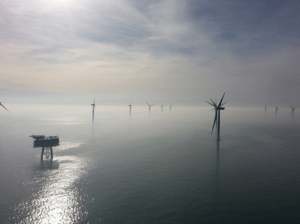In a significant renewable energy development, NEK Umwelttechnik AG, a Swiss engineering company, is gearing up to transform Ghana’s energy space with the rolling out of a series of wind energy projects.
Since its establishment in 1998, NEK has been actively involved in wind farm development in the country through its local branch, NEK (Ghana) Ltd. The company is now poised to move forward with multiple wind energy initiatives located in the Greater Accra Region, stretching between Tema and Ada. These projects consist of six large-scale wind parks, collectively boasting a capacity of around 1,300 MW.
Dr. Christoph Kapp, CEO of NEK Umwelttechnik AG explained that these wind parks are ready for construction, and once operational, they are expected to generate approximately 3,400 GWh of clean, sustainable, and cost-effective electricity annually. “This power will serve both the Ghanaian population and the industrial sector,” Dr. Kapp noted.
Moreover, it will contribute an average production capacity of 450 MW to the country’s electricity supply. This comes after the progress of these projects had been temporarily halted due to a government-imposed moratorium by the Energy Commission in 2017. However, the moratorium was lifted in April 2023, opening the path for the issuance of EC licenses for these wind projects.
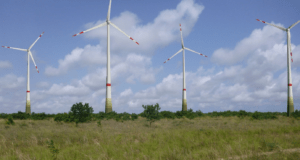
Energy crisis tinderbox
Warning from different entities and institutions have repeatedly indicated that without quick and adequate measures put in place, Ghana will face severe electricity generation and supply deficits in the very near future. The Electricity Supply Plan 2022 states that already in 2023, additional generation capacities of several 100 MW would be required to avoid a power crisis.
The Centre for Socioeconomic Studies (CSS) has also released a report in June 2023 that says that even if with the planned power projects called Bridge Power II, AKSA II and the Pwalugu Hydro Project, which are scheduled to have a combined potential generation capacity of 465 MW, Ghana will still have a generation deficit of at least 467 MW in 2025 and 916 MW in 2026.
There are however still some doubts, that all these three projects will come online in the next few years, which would increase the assumed power gap in Ghana to more than 1,000 MW in the very near future. The World Bank has also advised Ghana to quickly implement an emergency action plan to avert a power crisis.
Having in mind that new fossil power plants require at least five to eight years from the planning start to Commercial Operation Date (COD) and that it is unlikely that fossil plants can even be financed in the future, such plants can obviously not be used to close the opening power gap. In summary, Ghana requires more than 1,700 MW of additional installed electrical capacity before 2026.
One possibility to tackle the opening power gap is to bring NEK’s 6 wind energy projects online which are ready to be constructed. If the decision to do so is taken in 2023, then these projects can come online by late 2025 / beginning 2026. Should the decision be postponed, then this will affect the start of their operation.
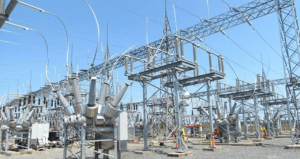
Ghana’s National Determined Contributions (NDC’s)
The Government of Ghana intends to implement its committed NDC’s, fulfil the COP26, COP27 and Sharm El-Sheik’s obligations and to move towards net zero emissions. Ghana also wants to reach at least a 10percent penetration of renewable energies in the energy mix of the country by 2030. The National Energy Transition Framework 2022 explains that Ghana intends to install in the country up to 21 GW (21,000 MW) of new renewable energy.
Just recently, Ghana’s President Nana Akufo-Addo launched the country’s new Energy Transition and Investment Plan during a Global Africa Business Initiative event in New York in late September 2023. Also, in there it is stated that the growth in generation in Ghana requires a substantial growth in new electricity capacity, dominated by wind and solar power.
The document also expresses that the installed power capacity in Ghana will grow from actually around 5,5 GW to approximately 38 GW in 2040 and to 64 GW in 2045. This means that up to 2040, more than 7 times the today’s installed capacity will be needed, while up to 2045, it increases to around 11 times. Where shall this urgently required power come from?
Investments in fossil power plants will in the future most likely no longer be financeable and therefore they are no option for the country already in the short term. The only solution, which will also be completely in line with Ghana’s NDC’s obligations, is to switch from outdated, very expensive, climate damaging and unsecure fossil plants towards net zero emissions.
This can be achieved by quickly developing and implementing large scale renewable energy power plants such as solar and wind. NEK has the capacity to do so, and by operating renewable energy plants in Ghana, the urgently required diversification of the energy sector can quickly start. Such a diversification will also contribute to lower “dumsor”, which is affecting the population and the industry sector of Ghana again more and more.
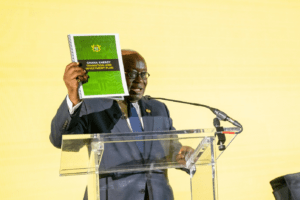
The idea of a renewable energy platform in Ghana
NEK together with its partners is in the process to create in Ghana a new renewable energy platform, on which all renewable generation resources from NEK’s wind farms and from other interested producers of clean energy will be implemented and operated. This does happen without impacting on public sector borrowings or IMF imposed restrictions.
This new platform will have several equity partners, lenders, and investors – large and well-known international power funds, investors and institutions will be amongst them. But also selected Ghanaian Stakeholders and institutions from the energy sector shall be integrated into this platform. Respective negotiations are ongoing. The platform will act as a “captive” industrial power generator by selling clean, never ending and cheap capacity and electricity directly to large industrial off takers or State-owned entities.
Only last September, the United Arab Emirates pledged US$4.5 billion to support African nations accelerate clean energy projects. It would be a unique chance for Ghana to tap this vessel.
Green Energy, Green Hydrogen and E-Mobility
Green energy from NEK’s wind farms for example can provide the cheapest generation costs for electricity in Ghana. While fossil power plants produce for approximately 15 US Cents per kWh, NEK’s wind farms will produce for less than 9 US Cents per kWh as per today. The end user tariffs in Ghana for power generation with the existing fossil power plants are subject to PURC price adjustments. In the future, these will for sure increase due to the raising gas and oil prices worldwide.
However, the end-user tariff for electricity produced by the wind parks under the renewable energy platform will not be subjected to these price adjustments. It will be constant for the 20 year’s operation phase of a wind park but with a marginal upwards potential of approximately only 5 – 15percent. This also would be a strong reason for Ghana to switch now to renewables.
In addition to green energy, Ghana also needs to develop a “Green Hydrogen” and an “E-Mobility” policy. The Government must indicate key strategies and relevant road maps for the development of the “energy carrier” in the future. It must be recalled that both green hydrogen and electric vehicles, only can be run on 100percent renewables, otherwise, they cannot be called green.
A strong political signal will trigger huge investments from abroad in the energy sector of Ghana and business activities relating to these future markets. The key for doing so is the implementation of renewable energy projects. By doing so, Ghana will in the future have the chance to become a net exporter of renewable energy through the West African Power Pool (WAPP) lines to the neighbouring countries.
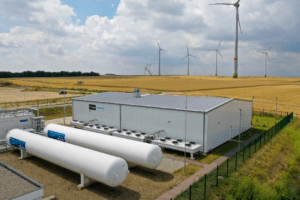
Uninterrupted power supply
The need for guaranteed uninterrupted power supply for industries in the view of the “One District, One Factory Policy” and the African Continent Free Trade Area on the one side and the ECOWAS goal to have by 2030 at least 48percent of renewables in its electrical network on the other side are forcing the implementation of renewable energies in the country. Wind power plants have a short implementation and realisation time, so that projects can become operational within 12 – 18 months after their construction start.
This advantage must also be seen in the Government’s policy of trying to achieve 100percent electricity coverage by 2025 throughout the country. If the Government wants to fulfil its promises as soon as possible, immediate actions are therefore required: It is imperative that the implementation of large-scale renewable energy projects starts right now.
By doing so, Ghana also becomes less dependent on expensive gas and oil imports. This comes along with the creation of a large number of new jobs, socio-economic benefits, economic growth, infrastructure developments and generally a commitment also to fight climate change. NEK’s wind energy pipeline and the envisaged renewable energy platform can offer the Government of Ghana the key for obtaining the above-mentioned sustainable development goals.
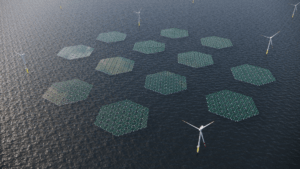
The VALCO modernisation and expansion plans
The Volta Aluminium Company Limited (VALCO) has announced it needs some US$600 million capital to revamp its operations and therefore is searching for a strategic partner. The goal is to reposition VALCO in a way that retrofitting will transform it from a loss-making entity into a best-in-class, profit-making and shareholder value-maximising entity, thus become the ultra-modern and best smelter in Africa. With the projection of the building of 4 operating bauxite mines and 2 refineries under the IAI Masterplan as well as the revival of the downstream sector, the modernisation and expansion of the VALCO smelter is timely, thus creating a new VALCO with much more significance than ever before.
However, such plans require a lot of additional electricity, which at least for the time being is not available in Ghana. It is estimated that at the end of the retrofitting and extension program, VALCO will require more than 1,000 MW of installed electrical power. “Where do we take this from?”
This question has been one of the reasons why NEK has started the development of 2 large scale offshore wind farm projects in the Gulf of Guinea. It is planned that these modern and according to highest international standards developed projects will have an installed capacity of approximately 2,500 MW and will generate yearly more than 7,000 GWh of clean and reliable power. These offshore wind farms do not require any fuel, NLG, gas, oil or other fossil, outdated energy sources – the “fuel” is the wind and the sun, which is never ending and is coming to Ghana for free.
This will also allow VALCO to produce in the future green aluminium, which will be standard worldwide in the years to come. Therefore, it is beneficial for VALCO to switch from fossil power sources to renewables as this would attract more potential strategic partners.
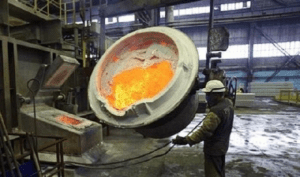
No financial obligations for Ghana
NEK does bring along together with its partners the whole financing package for these projects and the renewable energy platform. A financial obligation for the Republic of Ghana does not exist. It also is not required that Ghana issues any sovereign guarantee or similar, the whole investment for the implementation of these projects, which will be in the size of several billion USD, will come from abroad and will put absolutely no burden onto Ghana.
Lets’ move, the time is more than overdue.
